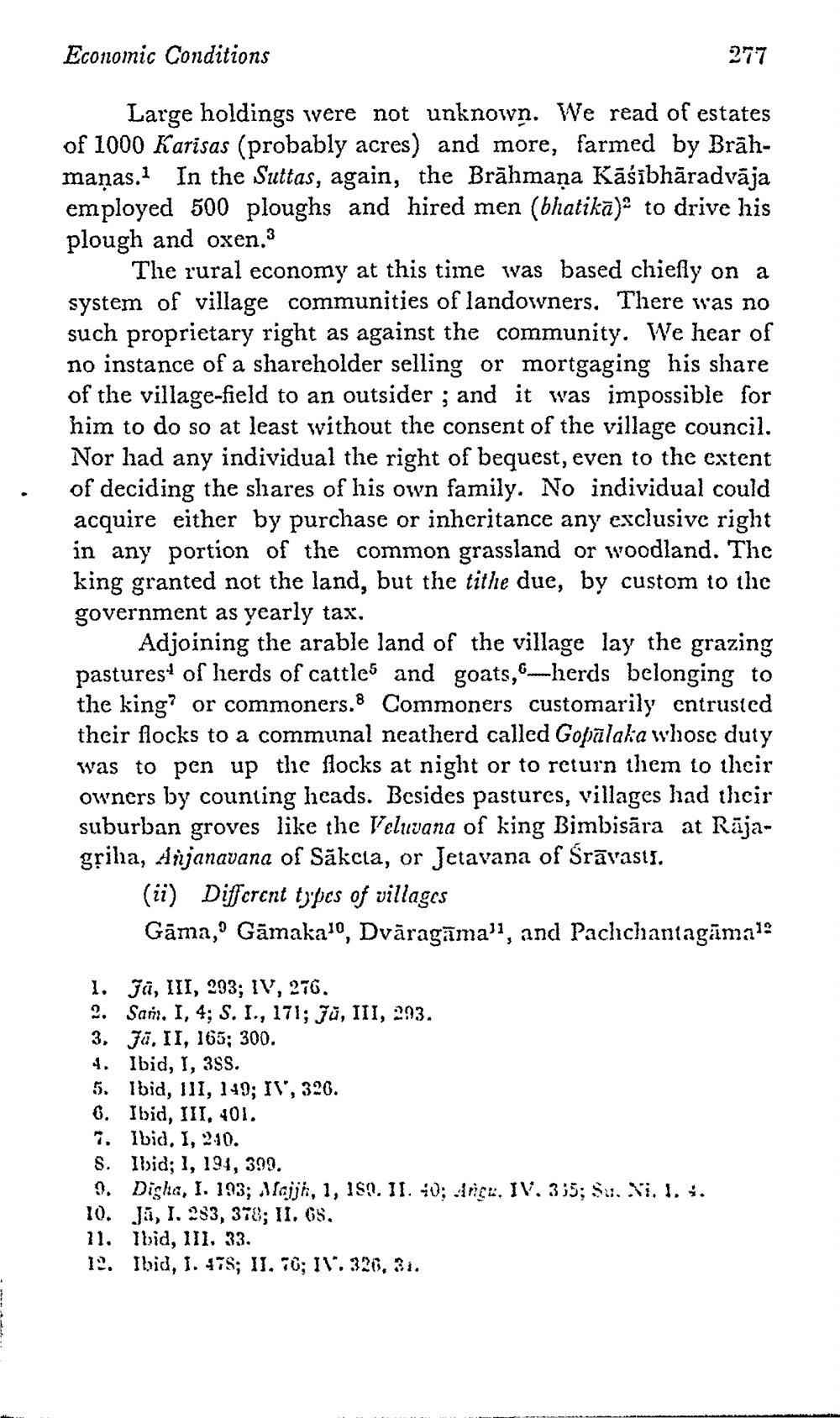________________
Economic Conditions
277
Large holdings were not unknown. We read of estates of 1000 Karisas (probably acres) and more, farmed by Brāhmanas. In the Suttas, again, the Brāhmaņa Kāśibhāradvāja employed 500 ploughs and hired men (bhatikā)- to drive his plough and oxen.3
The rural economy at this time was based chiefly on a system of village communities of landowners. There was no such proprietary right as against the community. We hear of no instance of a shareholder selling or mortgaging his share of the village-field to an outsider ; and it was impossible for him to do so at least without the consent of the village council. Nor had any individual the right of bequest, even to the extent of deciding the shares of his own family. No individual could acquire either by purchase or inheritance any exclusive right in any portion of the common grassland or woodland. The king granted not the land, but the tithe due, by custom to the government as yearly tax.
Adjoining the arable land of the village lay the grazing pasturest of herds of cattles and goats,_herds belonging to the king? or commoners.8 Commoners customarily entrusted their flocks to a communal neatherd called Gopalaka whose duty was to pen up the flocks at night or to return them to their owners by counting heads. Besides pastures, villages had their suburban groves like the Veluvana of king Bimbisāra at Rājagọiha, Anjanavana of Sākcia, or Jetavana of Śrāvasis.
(ii) Different types of villages Gama," Gāmakalo, Dvāragăma'l, and Pachchantagāmat:
1. Jä, III, 293; IV, 276. 2. San. I, 4; S. I., 171; Jū, III, 293. 3. Ja. II, 165; 300. 4. Ibid, I, 3$S. 5. Ibid, 111, 149; IV, 320. 6. Ibid, III. 401. 7. Ibid. I, 210. S. Ibid; 1, 194, 399.
Digha, 1. 193; „Vlajk, 1, 150. II. 70; inca, IV. 335; Su..V. 1. .
Ja, I. 233, 378; 11. GS. 11. Ibid, 111. 33. 19. Ibid, 1. 475; II. 70; IV. 330, 31.




